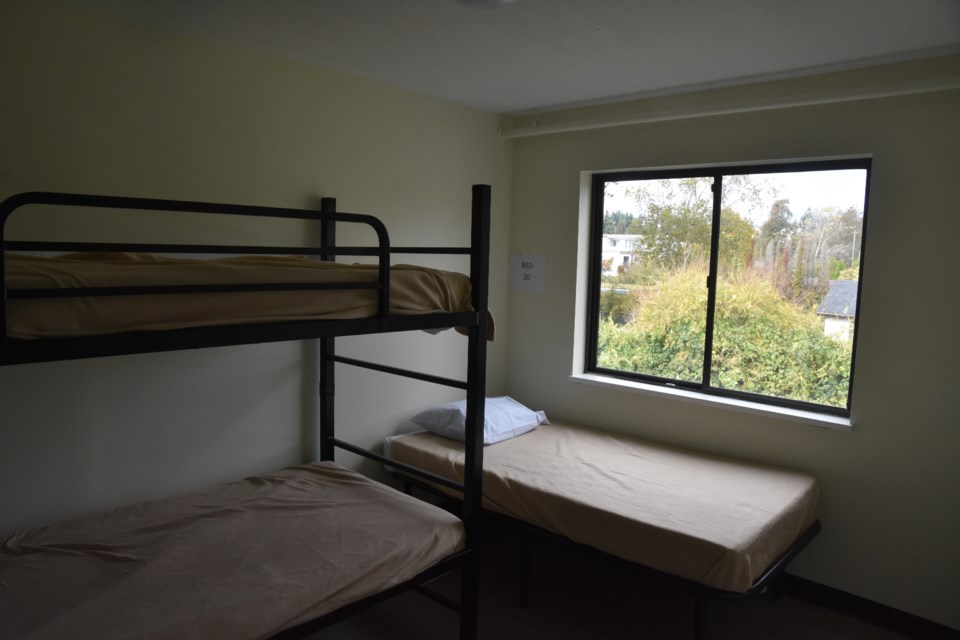As the Sechelt Shelter, the only year-round homeless shelter on the lower Sunshine Coast, prepared to reopen, Coast Reporter got a tour of the newly repaired and renovated space.
A small fire resulted in the shelter closing in February because of water damage from the sprinkler system. It started its phased reopening Oct. 23.
Mandy Hardwick and their team have worked for the past eight months to re-establish the safe place for those in need on the Coast. The space initially opened in 2017.
Prior to the closure, RainCity Housing and Vancouver Coastal Health operated an Overdose Prevention Site at the shelter. Since the fire, the site has gone mobile, the OPS Sprinter van parking in front of the Hightide Avenue supportive housing complex. The van will move back to the shelter at the end of the month, Sunshine Coast Community Action Team coordinator, Jaylene Marie Scheible, told Coast Reporter.
The upstairs level can host up to 20 people at a time, rooms include single beds as well as bunk beds. The level also features communal spaces with couches and a T.V., multiple bathrooms with showers, and a kitchen.
Many of the rooms have a beautiful view of Downtown Sechelt, along with fresh paint and new floors.
The main entrance to the Sechelt Shelter is on the back deck, which is accessed by a staircase where a buzzer system allows the staff to admit people.
The ground floor of the shelter was used as a staging area for staff while the upstairs level was completed and soon it will also be open to guests.
In order to accommodate the unhoused community on the Coast with mobility issues, the lower level, including its washrooms, is accessible to all. There are also roll-in showers and large communal dining room tables where residents can share a meal.
Once the lower level opens up, the shelter will be able to accommodate up to 35 people at a time.
Other ways the Shelter helps its residents
The shelter provides much more than a room to stay, Hardwick explained as they described some of the other services provided, such as meals. “We do breakfast, snacks and then we do a hot meal,” they said. “And all of our meals are prepared next door at our supportive housing industrial kitchen.”
Hardwick said other services also offered include Indigenous cultural services, a peer work program and case planning with individuals on a daily or weekly basis.
“We're checking in on goals, to see how people are feeling, where they want to be going, where they're headed to whether they have goals around occupational or vocational stuff, treatment, just general health goals,” said Hardwick. “Living in a shelter, most people's goals are housing.”
Jordan Copp is the Coast Reporter’s civic and Indigenous affairs reporter. This reporting beat is made possible by the Local Journalism Initiative.



